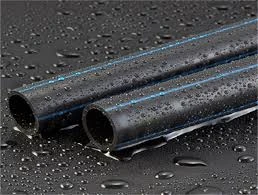Dis . 29, 2024 09:54 Back to list
Cost Analysis of HDPE Pipes for Construction and Infrastructure Projects
Understanding the Cost of HDPE Pipe Factors and Implications
High-Density Polyethylene (HDPE) pipes have gained substantial popularity in various industries, including water distribution, wastewater treatment, and gas distribution, due to their durability, flexibility, and corrosion resistance. However, a critical consideration for any project involving HDPE piping is the associated costs. Understanding these costs can help budget effectively and make informed decisions regarding material selection and project execution.
Factors Influencing HDPE Pipe Costs
1. Material Quality The quality of the raw HDPE resin significantly impacts the cost of the finished pipe. Higher-grade materials often come with a higher price tag but can offer better longevity and performance, especially in demanding applications.
2. Pipe Dimensions The diameter and length of the HDPE pipe directly influence the cost. Larger diameter pipes require more material, which increases the overall expense. Additionally, longer runs can lead to increased shipping and handling expenses.
3. Manufacturing Processes Different manufacturing methods can alter the cost of HDPE pipes. For instance, pipes produced using advanced extrusion techniques may possess enhanced properties and thus carry a premium. Conversely, simpler production methods may reduce expenses but could impact quality.
4. Jointing Methods The choice of jointing or joining methods can also affect costs. Techniques like butt fusion or electrofusion provide strong and reliable connections but may require additional equipment and labor, increasing the overall project cost.
hdpe pipe cost

5. Market Demand and Supply Just like any commodity, HDPE pipe prices can fluctuate based on market dynamics. Increased demand due to infrastructural projects or supply chain disruptions can lead to price hikes. Conversely, oversupply can bring prices down.
6. Geographic Location Transportation costs can vary significantly based on the geographic location of the project. Shipping HDPE pipes across long distances can add significant costs, so sourcing locally may offer financial advantages.
7. Installation Costs The cost of labor and equipment for installing HDPE pipes should not be overlooked. While HDPE pipes are relatively lightweight and easier to handle compared to traditional materials like ductile iron or concrete, specialized equipment may still be required for trenchless installations or larger diameter pipes, impacting overall project costs.
Long-Term Cost Benefits
While the initial investment in HDPE piping may appear higher compared to traditional materials, it is crucial to consider the long-term benefits. HDPE pipes exhibit higher resistance to corrosion and chemicals, leading to lower maintenance costs over time. Their flexibility allows for easier installation around obstacles and in challenging terrains, potentially reducing installation time and labor costs. Moreover, HDPE's lightweight nature can result in lower shipping costs and less wear and tear on installation equipment.
Conclusion
When evaluating the costs associated with HDPE pipes, it is essential to factor in both short-term expenses and long-term savings. Understanding the various elements that contribute to the overall cost will empower project managers and engineers to make informed decisions that align with their budget and project goals. As industries increasingly shift toward durable and sustainable materials, HDPE pipes will likely continue to play a significant role, balancing initial costs with their myriad long-term advantages.
-
Durable PP Rigid Sheet: Lightweight, Chemical Resistant Solutions
NewsAug.21,2025
-
PVC Grey Sheet for Extraction: Chemical Resistant & Durable
NewsAug.19,2025
-
Durable PVC Pipe Fittings for Plumbing & Irrigation Needs
NewsAug.18,2025
-
HDPE Steel Belt Reinforced Spiral Corrugated Pipe | High Strength
NewsAug.17,2025
-
HDPE Pipe Fittings: Durable, Leak-Proof Solutions
NewsAug.16,2025
-
Premium CPVC Sheet: High-Temp & Chemical Resistant Solutions
NewsAug.15,2025

